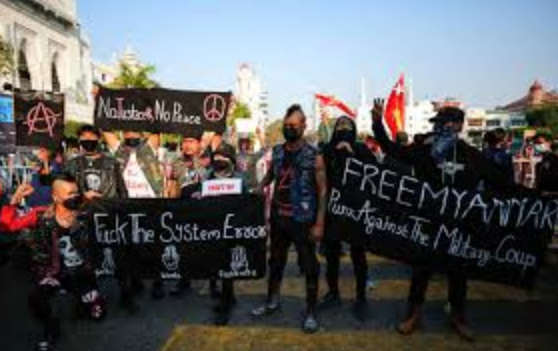The Civil Disobedience Movement bluntly asked: Why did India “shake hands with the generals whose hands are soaked with our blood?” This is an important and urgent question
On March 27, as Colonel Ketan Mohite, India’s defence attaché to Myanmar, shared pleasantries with the Tatmadaw generals at the Armed Forces Day Celebrations in Naypyidaw, men under the command of the generals executed cold-blooded mass murder across the country. India’s formal participation in the event, one day after the state government of Manipur issued a circular (now withdrawn) to return forced migrants from Myanmar, shocked most observers.
To buy our online courses: Click Here
Past experience of failed interventionism after the 1988 coup, and the rewards of sticking with the Tatmadaw during the 2007-08 protests guide this approach. It is treated as necessary realpolitik at the altar of which democratic values that enshrine respect for human rights, freedom of speech, and minority protection may be sacrificed. The developed world’s selective and counterproductive rage is cited as further justification for India’s geopolitical pragmatism.
In the long-term, it is argued, India prefers a democratic Myanmar, but in the short-term, it must deal with existing realities. The problem is, in the long-term, everyone is dead. Moreover, Myanmar’s inbred generals have made it a cyclical habit to first introduce meaningless political reforms, which fuel false optimism in every new iteration in the short-term, and then sabotage them at whim.
India’s Myanmar dilemma, then, is not about values versus interests. It is a deeper crisis of missing the point on realpolitik itself. Today, Myanmar is on the edge of a State collapse. Its long-standing ethnic insurgencies are intensifying, the Bamar-Buddhist heartland has erupted in protests, and even the Buddhist Sangha has distanced itself from the coup-makers. The junta is not collapsing, but it is under unprecedented pressure.
Realpolitik, not moral obligations, demands India step up its diversification game and bury inhibitions of angering the generals. If after three decades of a Tatmadaw-centric approach, India has not developed enough leverage with the generals to nudge them into a politically inclusive direction, then continuing on the same path now won’t yield different results. If anything, the junta will privately despise India as a weak neighbor and continue to chide it as being a “NATO” (“No Action, Talk Only”) country.
China, for its part, has also pursued a multi-stakeholder strategy. But Beijing is neither interested in conflict resolution, nor capable of dealing with socio-political plurality inclusively. Unsurprisingly, it failed to move the needle on the Pang long process and the Rohingya crisis. At most, Beijing hedged its bets in engaging with EAOs, carved out a modern-day protectorate in WA, and hoped that easy cash-and-loans coupled with a Security Council veto would do the rest.
India, despite its nationalist turn, excels in managing diversity. It is the only neighbor that stands a chance, if at all, in working with international interlocutors to find a political solution and end the perpetual cycle of instability in Myanmar. But for that to happen, India needs to widen and deepen engagement with all actors inside the country. The costs of such diversification are relatively low, but the risks associated with not doing it are high.
True, the Tatmadaw is important to secure the Kaladana project. But at the rate at which the situation is deteriorating inside Myanmar, and public protests mounting in Mizoram, the chances of translating this project into an economically viable platform looks bleak. Even the Adani group, which has invested in the Yangon port, will be forced to revisit its cost-benefit analysis if the situation persists. Civil strife fosters illicit trade, but doesn’t augur well for licit businesses.
Myanmar is a neighbor, and this is where one would expect India to be bold, creative, and undertake diplomatic heavy-lifting—precisely because China requires countering, regional economies need oxygen, and because it’s worth trying to save lives.




